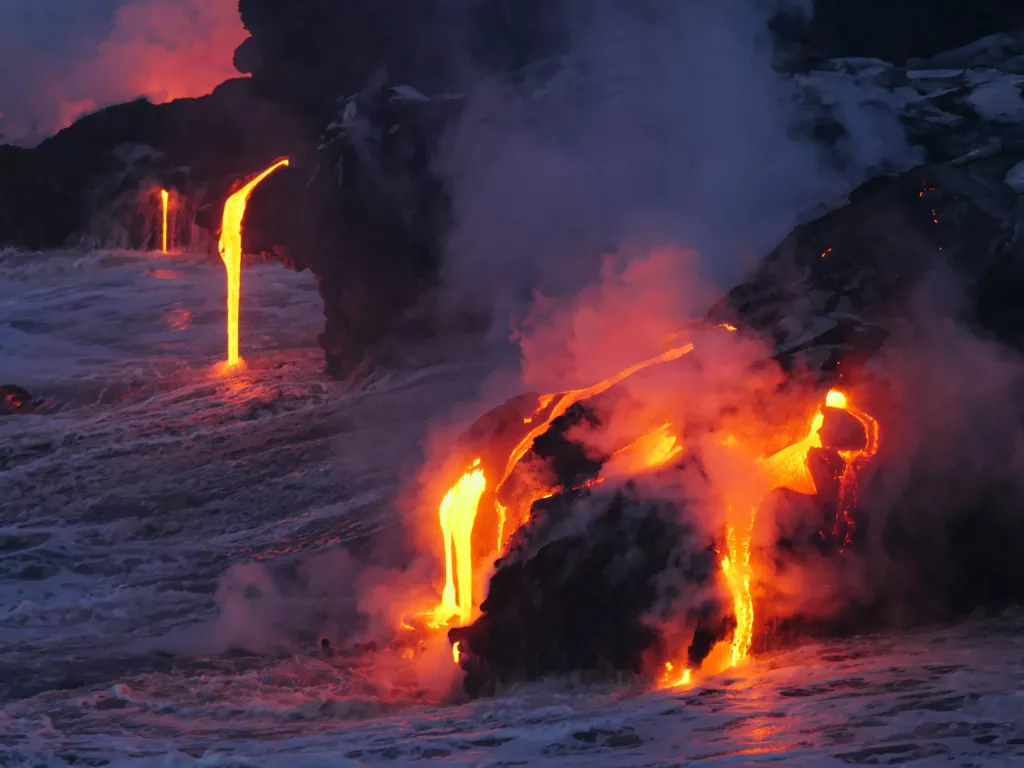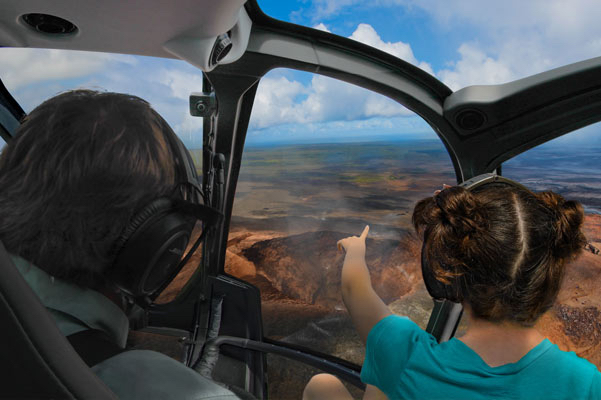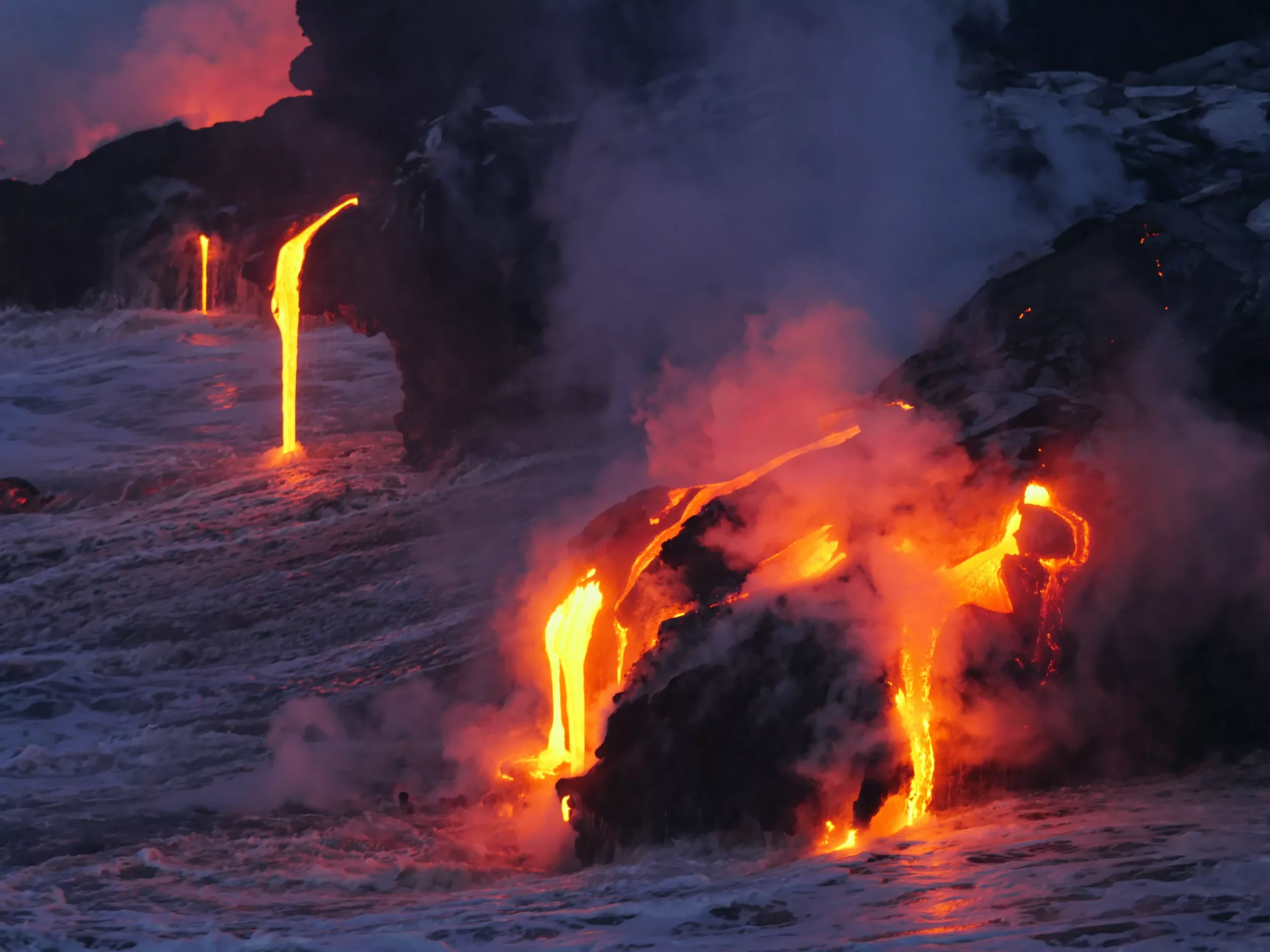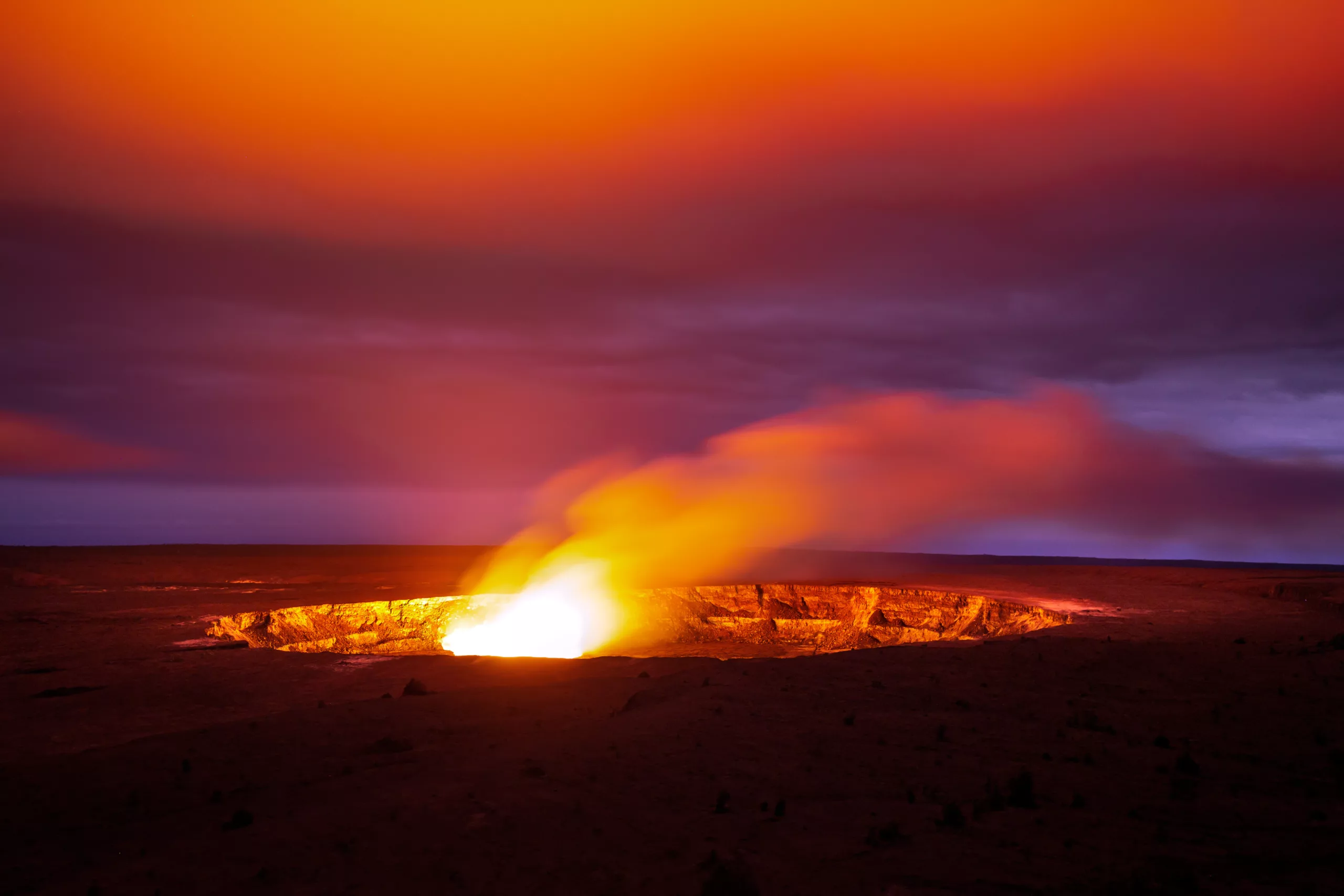by Suzanne G.
This might surprise you, but the United States has more active volcanoes than any other country in the world. Most are located in Alaska, Hawaii, and the West Coast, but for many mainlanders, volcanoes still feel like a foreign and otherworldly phenomenon. We are fascinated by their beauty and intimidated by their power, it is no wonder that we flock to them when we travel.
The eight Hawaiian Islands were formed by fifteen volcanoes, although only five remain active today. Evidence of Hawaii’s volcanic origin can be spotted throughout the islands. This can be seen everywhere, from the black sand beaches to the ancient lava tubes that dot the islands, to sea caves and sunken craters that are now popular sightseeing or diving spots. The remnants of ancient eruptions and long dormant volcanoes are all around you.
That said, if you want to explore an active volcano up close during your time in Hawaii, here is a guide to the five active volcanoes in Hawaii.
The Five Active Volcanoes in Hawaii
Haleakalā (Maui)
Haleakala (“house of the sun”) is an active volcano, although its last eruption was believed to occur in 1790. It features prominently in Hawaiian folklore, particularly in lore about the demigod Maui. Haleakala is located on the eastern side of the island. The summit is 10,023 feet at its highest point. The crater is surrounded by and under the jurisdiction of Haleakala National Park.
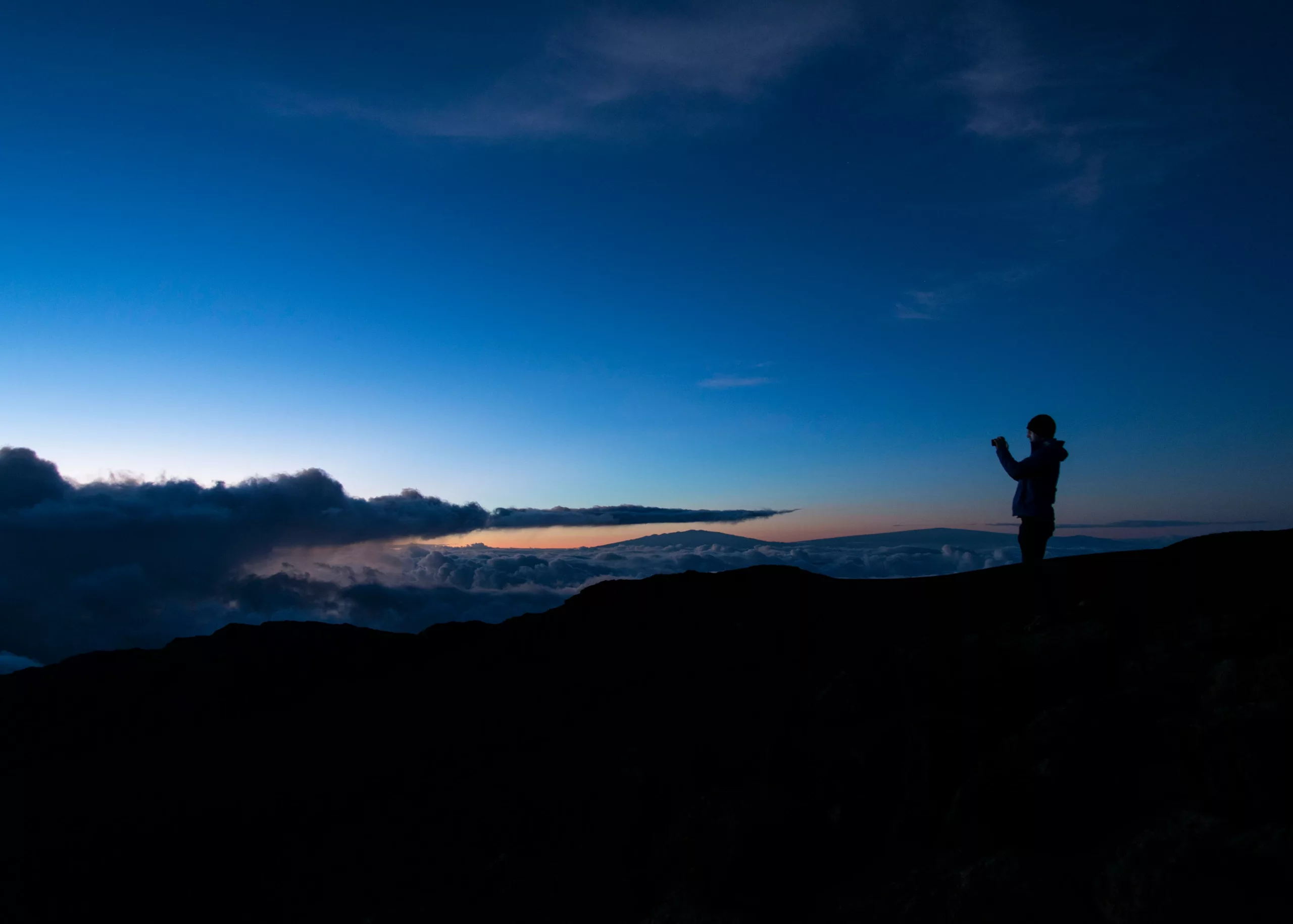
The 30,000+ acre park is mostly wilderness, but there are two main hiking trails into Haleakala from the summit. There is also limited rustic lodging and an NPS-run visitor center located just below the summit. There are no food, gas, or other guest services available in the park though.
Haleakala’s accessibility and stunning views have made it a popular spot for watching the sunrise. So much so that the park has recently instituted a reservation system at sunrise to prevent crowding. Sunsets on Haleakala are also spectacular and without the crowds. If the idea of driving up or down a steep mountain road in the dark doesn’t thrill you, don’t worry. There are sunrise and sunset tours that will do the driving and handle the National Park reservations for you. They may even feed you breakfast!
Kilauea (Big Island)
Kilauea is the most active volcano in Hawaii and one of the most active on Earth. It is located on the Big Island’s southeastern shore. Its name means “spewing” or “much spreading” referring to its frequent flow of lava. Kilauea erupted continuously from 1983 to 2018, one of the longest recorded eruptions on Earth. From 2008 until 2018 a large visible lava lake in Halemaʻumaʻu Crater, at its summit, was present. However, in 2018, a series of eruptive episodes changed the structure and appearance of the volcano (and the island) forever. In a tragic turn of events, a lava flow destroyed nearly 700 homes in the Puna district on its journey downslope to the Pacific Ocean. Additionally, the floor of the crater eventually collapsed.
Today the crater’s lava lake is more than 200 feet deep and usually crusts over unless it is actively erupting. In 2023, there were three active eruptions in Halemaʻumaʻu crater, the last one occurring from September 10-16th. During these short windows of activity vents in the crusted-over lava lake open up and steam, lava, or even lava fountains may be visible.
Hawaii Volcanoes National Park: Although lava may not be visible during your time on the islands, a visit to Halemaʻumaʻu crater is a must. Kilauea’s summit is surrounded by Hawaii Volcanoes National Park, the most popular attraction on the Big Island. The park provides a few limited interpretative programs, a large visitor center, and several easy-to-moderate hiking trails near the summit. The historic Volcano House, built near the caldera rim provides lodging and a full-service restaurant as well. The entrance to the park is from the Hilo side of the island, which is a two-hour trek from Kona. (You’ll likely be staying on the sunnier Kona coast where most of the resorts are located). Fortunately, many volcano tours include Kona and Waikoloa pick-ups. Likewise, some tours will take you to the best spots in Volcanoes National Park and Hilo all in one fell swoop. And if you’re really adventurous, helicopter tours offer a spectacular view of Halemaʻumaʻu crater and the Big Island’s rugged volcanic landscape.
Mauna Loa (Big Island)
Mauna Loa is the largest active volcano on Earth. Its name means “long mountain” and its gentle slopes cover over 2,000 square miles. Its highest peak is 13,679 feet, just slightly shorter than its neighbor Mauna Kea. Mauna Loa most recently erupted at the end of 2022. The eruption lasted several weeks, threatening to cut off a major highway, and was visible from Hilo (almost 50 miles away). Fortunately, there was no major property damage or injuries from this eruption.
Although some of Mauna Loa’s slopes are privately owned, most of the mountain falls under the National Park Service jurisdiction and is within the Hawaii Volcanoes National Park boundary. The summit is not accessible by car but is accessible to the public via a long rugged hiking trail. Two small backcountry cabins were available to registered hikers, but one has been closed since the 2022 eruption. For most visitors, though, the best way to explore Mauna Loa will be to see it from the air.
Hualalai (Big Island)
Hualalai is the third most active volcano on the Big Island. It is located on the island’s western side with an elevation of 8,271 feet. Its name means “the fruit/seed of calm”. Hualalai’s last eruption was in 1801, after remaining inactive for over two thousand years. The summit is surrounded by mostly privately owned land. However, there are a few nature preserves, a national historical park, and several popular hiking trails on its slopes, giving the public a chance to explore it a bit.
Hawaiians have lived on Hualalai for centuries and the area around it remains inhabited even though it is expected to erupt within the next 100 years. Development continues despite the probability of seismic activity and future eruptions. Kona area coastal resorts and the Kona airport are built on its historic lava flows, and Kona coffee is grown on Hualalai’s western slope. If you are on the Big Island, you’ll likely come into contact with Hualalai or its remains without even realizing it. You can even see lava tubes from the volcano’s ancient flows as you drive along the main highway leaving the airport.
Kama’ehuakanaloa (Seamount)
Kama’ehuakanaloa is an active submarine volcano located about twenty-two miles southeast of the Big Island. Its name means ‘glowing child of Kanaloa’, referring to the god of the ocean. From the 1950s until recent years the volcano was referred to as “Lōʻihi” before efforts were made to restore its original and culturally appropriate name. Kama’ehuakanaloa is the youngest of Hawaiian volcanoes and is still growing. Its summit is 10,000 feet in elevation, but still 3,200 feet below sea level. Scientists believe that it will rise above sea level in about 10,000 years if it remains active. Kama’ehuakanaloa’s last documented eruption was in 1996, but low-level seismic activity from within is constant. Kama’ehuakanaloa’s summit experiences two to ten earthquakes a day. You can’t see or visit this volcano, but you may feel it rumble if you visit the Big Island!
But what about Oahu?
Unfortunately, there are no active volcanoes on Oahu. However, hiking to the top of Diamond Head Crater or checking out the view from the top of Punchbowl Crater are two great alternatives.
But if your heart is set on seeing active volcanoes, consider taking a day trip to the Big Island. Island hopping is easier and more affordable than you might expect, especially when someone else plans it for you! The Volcano Adventure Tour from Oahu includes round-trip airfare, airport pickups, and a guided tour of Volcanoes National Park and historic Hilo. You can even add on a helicopter tour if you want!
-
Best Pit Stops from Kona to Volcano
by Diane L. The two-hour drive from Kona to Volcano is one of the most beautiful drives on the Big Island. You probably already know this. But you might be surprised by how many interesting things there are to see and do along the way. From beautiful beaches to important historical sites, there are a…
-
Volcanoes in Hawaii: A Guide for Travelers
by Suzanne G. This might surprise you, but the United States has more active volcanoes than any other country in the world. Most are located in Alaska, Hawaii, and the West Coast, but for many mainlanders, volcanoes still feel like a foreign and otherworldly phenomenon. We are fascinated by their beauty and intimidated by their…
-
Big Island Volcano Tours: Which tour should you take?
by Suzanne G. A Big Island volcano tour is a must-do whenever visiting the island. Hawaii Volcanoes National Park is the Big Island’s main attraction and home to Mauna Loa and the world’s most active volcano, Kilauea. The volcanoes can be experienced in a variety of ways, each with different levels of commitment when it…

